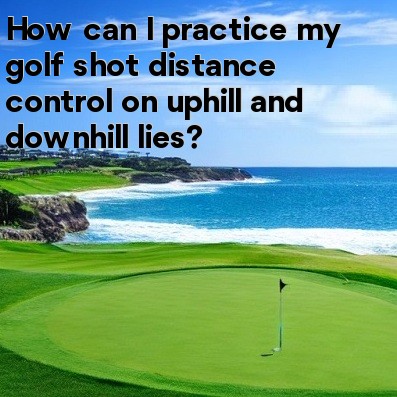
Practicing Golf Shot Distance Control on Uphill and Downhill Lies
Mastering the art of distance control is essential for any golfer looking to improve their game. Uphill and downhill lies can pose a challenge when it comes to estimating your shot distances accurately. In this article, we will explore some effective ways to practice golf shot distance control on uphill and downhill lies.
Before we delve into the practice techniques, it's important to understand how uphill and downhill lies affect shot distances. When hitting from an uphill lie, the ball tends to launch higher and fly shorter due to the slope. Conversely, when hitting from a downhill lie, the ball tends to launch lower and fly longer.
- Practicing on Uphill Lies:
- Find a gentle slope or use an inclined mat to simulate an uphill lie.
- Take note of the degree of slope and the estimated distance you want to hit the ball.
- Select a club that you believe will achieve the desired distance.
- Focus on maintaining a solid base and keeping your weight centered.
- Make practice swings to get a feel for the impact position and the required swing speed.
- Aim to strike the ball cleanly and watch the trajectory and resulting distance.
- Adjust your club selection and swing speed accordingly until you consistently achieve the desired distance.
- Practicing on Downhill Lies:
- Similar to practicing on uphill lies, find a gentle slope or use a declined mat to simulate a downhill lie.
- Take note of the degree of slope and the estimated distance you want to hit the ball.
- Select a club that you believe will achieve the desired distance.
- Address the ball with your weight bias towards your front foot to compensate for the downhill slope.
- Make practice swings to get a feel for the impact position and the required swing speed.
- Focus on maintaining a smooth and controlled swing while keeping your balance.
- Strike the ball cleanly and observe the trajectory and resulting distance.
- Adjust your club selection and swing speed until you consistently achieve the desired distance.
Practicing distance control on uphill and downhill lies requires attention to detail and consistency. It is important to understand that each slope and lie will vary, so adaptability is key in these situations. By refining your distance control skills, you will become more confident in your shot-making abilities and better equipped to handle different course conditions.
Remember to practice under various uphill and downhill lie scenarios to develop a well-rounded skill set. Utilize different clubs and experiment with different swing speeds to gain a better understanding of how each factor affects your shot distances.
Lastly, always keep in mind that quality practice and repetition are key to improving your golf game. Be patient, persistent, and willing to analyze and make adjustments as needed. With time and practice, you will gradually enhance your distance control on uphill and downhill lies, resulting in improved performance on the golf course.





